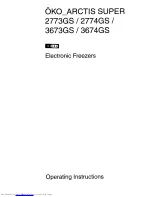
SST316L
pH
6.5 to 9.5
Total hardness (as CaCO
3
)
50 to 750 mg/l
Total alkalinity (as CaCO
3
)
600 mg/l max.
Total dissolved solids
2500 mg/l max.
Conductivity
4000 µS/cm
Chlorides
750 mg/l max.
Sulfates*
750 mg/l max.*
Total suspended solids
25 mg/l max.
Chlorination (as free chlorine/halogen): continuous
2 mg/l max.
Chlorination (as free chlorine/halogen): batch dosing
for cleaning & disinfection
5-15 mg/l max. for 6 hours max.
25 mg/l max. for 2 hours max.
50 mg/l max. for 1 hour max.
Circulated water quality guidelines for Stainless Steel
*Note:
Higher concentration of sulphates is allowed provided the sum of chl sulphates parameters does not exceed 650 mg/l for
SST304L and 1500 mg/l for SST316L.
For Ozone water treatment application:
•
Stainless steel 316L execution is required.
•
Ozone levels are to be maintained to 0.2 ppm ± 0.1 ppm for at least 90% of the time, with absolute maximum
peaks of 0.5 ppm
Cycles of concentration are the ratio of the dissolved solids concentration in the circulating water compared to the
dissolved solids concentration in the make-up water. The blow down rate can be calculated as follows:
Blow down = Evaporation loss / (Cycles of concentration – 1)
The evaporation loss is not only function of the heat load but also depends on climatic conditions, the type of
equipment used and the method of capacity control, which is applied. The evaporation loss at summer conditions
is approximately 0.431 l/ 1000 kJ heat rejection. This number should be used for blow down valve sizing only and
not for the calculation of annual water consumption.
Biological control
The growth of algae, slimes and other micro-organisms, if uncontrolled, will reduce system efficiency and may
contribute to the growth of potentially harmful micro-organisms, such as Legionella, in the recirculating water
system.
Accordingly a treatment programme specifically designed to address biological control should be initiated when the
system is first filled with water and administered on a regular base thereafter in accordance with any regulations
(national, regional) that may exist or in accordance with accepted codes of good practice, such as EUROVENT
9-5/6, VDMA Detailsheet 24649 etc.
It is strongly recommended to monitor the bacteriological contamination of the recirculating water on a regular base
(for example, TAB test with dip slides on a weekly base) and record all results.
W W W . B A L T I M O R E A I R C O I L . E U
11
3 Water Care
3 Water Care












































